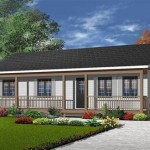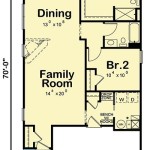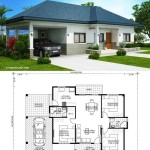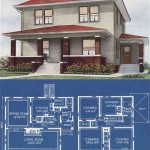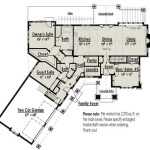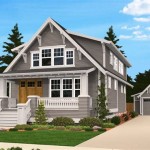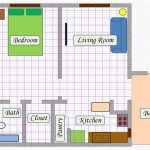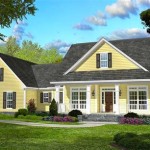2-Story Log Cabin Floor Plans: Maximizing Space and Rustic Charm
Two-story log cabin floor plans offer a compelling solution for those seeking the rustic charm and natural appeal of a log home while maximizing living space, especially on smaller or sloping plots of land. These plans combine the classic aesthetics of log construction with the efficient utilization of vertical space, providing a comfortable and functional living environment. The appeal of a two-story log cabin lies in its ability to blend seamlessly with nature, offering a retreat that is both aesthetically pleasing and practically designed.
When considering a two-story log cabin, several factors influence the final design. The size of the property, the intended use of the cabin (primary residence, vacation home, or rental property), budget constraints, and personal preferences all play a critical role in shaping the floor plan. A careful evaluation of these aspects is essential to ensure that the final product meets the individual needs and expectations of the homeowner.
Key Considerations in Two-Story Log Cabin Design
Designing a two-story log cabin involves specific considerations that differ from single-story structures. These considerations directly impact the structural integrity, functionality, and overall aesthetic appeal of the cabin.
Structural Integrity: Log cabins, by their nature, require careful attention to structural engineering. In a two-story design, the distribution of weight and the stability of the log walls become even more crucial. The foundation must be robust enough to support the additional load of the second story. Log settling, a natural process in log construction where logs compress over time, needs to be accounted for in the design to prevent issues with windows, doors, and interior walls. Proper joinery techniques, such as dovetail or mortise-and-tenon joints, are essential to ensure the logs interlock securely and create a structurally sound building. A qualified structural engineer experienced in log construction is invaluable in ensuring the long-term stability and safety of the cabin.
Staircase Design and Placement: The staircase is a vital element in a two-story log cabin, providing access to the upper level. Its design and placement significantly impact the flow and functionality of the interior space. The staircase should be strategically located to minimize wasted space and maximize the usability of both floors. Considerations should be given to building codes concerning the steepness, width, and headroom of the stairs to ensure safety and compliance. Options range from traditional straight staircases to more space-saving designs such as spiral staircases or L-shaped staircases. The choice of materials for the staircase, such as wood or metal, should complement the rustic aesthetic of the cabin. The incorporation of storage space beneath the staircase is a practical way to utilize otherwise unused area.
Heating and Cooling: Maintaining a comfortable indoor temperature in a two-story log cabin requires careful consideration of heating and cooling systems. Due to the natural properties of logs, they provide some degree of insulation; however, supplemental heating and cooling are typically necessary, especially in regions with extreme temperature variations. The design should incorporate energy-efficient windows and doors to minimize heat loss in the winter and heat gain in the summer. The placement of windows should also consider natural light and ventilation, maximizing sunlight exposure during the colder months and promoting airflow during warmer months. Options for heating include wood-burning stoves, propane fireplaces, and central heating systems. Cooling options include air conditioning units or strategically placed windows and fans to promote natural ventilation.
Popular Two-Story Log Cabin Floor Plan Layouts
Various floor plan layouts cater to different needs and preferences. Understanding these common layouts can assist in selecting the most suitable design for a given situation.
The Traditional Layout: This layout typically features a living area, kitchen, and dining area on the first floor, with bedrooms and bathrooms located on the second floor. The living area often includes a large stone fireplace, serving as a focal point and providing a source of heat. The kitchen is typically designed with ample counter space and storage, incorporating rustic elements such as wooden cabinets and exposed beams. The bedrooms on the second floor offer privacy and separation from the living areas. This layout is well-suited for families or individuals who desire a clear separation between living and sleeping spaces. The traditional layout often incorporates a loft area overlooking the living room, adding visual interest and creating a sense of spaciousness.
The Open Concept Layout: Open-concept designs eliminate or minimize walls between the living area, kitchen, and dining area, creating a more spacious and social environment. This layout is ideal for those who enjoy entertaining or prefer a more modern and airy feel. The kitchen is often integrated seamlessly into the living area, with a large island serving as a central gathering point. The second floor typically houses bedrooms and bathrooms, providing a private retreat from the common areas. The open-concept layout allows for better natural light penetration and facilitates easier interaction between family members or guests. However, it may require careful planning to define different zones within the open space and ensure adequate privacy in the bedroom areas.
The Loft-Style Layout: This layout emphasizes the vertical space of the cabin, with a large open living area that extends to the second floor. The second floor typically consists of a loft area overlooking the living room, which can be used as a bedroom, office, or recreational space. This layout is well-suited for individuals or couples who appreciate a minimalist and contemporary design. The loft-style layout creates a dramatic sense of spaciousness and allows for ample natural light to flood the interior. However, it may offer less privacy compared to traditional layouts with enclosed bedrooms. Careful consideration should be given to sound insulation and temperature control in the loft area to ensure comfort.
Maximizing Space and Functionality in Two-Story Log Cabins
Given the inherent limitations of space in many log cabins, particularly smaller designs, maximizing space and functionality is crucial. Employing strategic design elements and space-saving techniques can significantly enhance the usability and comfort of the cabin.
Multi-Functional Furniture: Selecting furniture that serves multiple purposes is an effective way to save space. Examples include sofa beds, storage ottomans, and dining tables with extendable leaves. In the bedrooms, beds with built-in drawers provide additional storage space for clothing and linens. In the living area, coffee tables with lift-top functionality offer concealed storage for books, magazines, or remote controls. Multi-functional furniture allows for greater flexibility and adaptability in smaller spaces, maximizing the usability of each room.
Built-In Storage: Incorporating built-in storage solutions, such as bookshelves, cabinets, and window seats with storage compartments, can help to declutter the interior and maximize space. Built-in storage can be customized to fit the specific needs and dimensions of the cabin, providing a seamless and integrated look. In the kitchen, built-in pantries and spice racks optimize storage space and keep countertops clear. In the bathrooms, built-in shelves and cabinets provide storage for toiletries and towels. Built-in storage not only saves space but also adds architectural interest and character to the cabin.
Vertical Space Utilization: Utilizing vertical space is essential in two-story log cabins, especially in areas with limited floor space. Tall ceilings can be used to create a sense of spaciousness and allow for the installation of high shelves or cabinets. Wall-mounted shelves and cabinets can be used to store books, decorations, or kitchenware. Loft areas can be created to provide additional living or storage space. The strategic use of vertical space maximizes the available area and prevents the cabin from feeling cramped or cluttered. In the living area, a tall stone fireplace can serve as a focal point and add architectural drama.
Strategic Window Placement: Window placement is critical for maximizing natural light and ventilation. Large windows on the south-facing side of the cabin can provide ample sunlight during the winter months, helping to heat the interior naturally. Smaller windows on the north-facing side can minimize heat loss. Strategically placed windows can also create cross-ventilation, promoting airflow and reducing the need for air conditioning. In areas with privacy concerns, consider using frosted glass or strategically placed landscaping to shield the interior from view. Window placement should also consider the views from the cabin, framing scenic landscapes and creating a connection with the outdoors.
In summary, designing a two-story log cabin requires careful consideration of structural integrity, staircase design, heating and cooling systems, and efficient space utilization. By selecting the appropriate floor plan layout and incorporating space-saving techniques, it is possible to create a comfortable and functional living environment that captures the rustic charm of a traditional log home, while maximizing the use of available space.

Edgewood 2 Bed Bath 1 5 Stories 1148 Sq Ft Appalachian Log Timber Homes Hybrid Home F Floor Plans Cabin House

2 Story Log House Plan 3127 Laramie Cabin Plans Floor Home

Cabin House Plans Cottage

Cedar Ridge 4 Bed 3 Bath 2 Stories 2502 Sq Ft Appalachian Log Timber Homes Hybrid Home Floor Plans Mansion Plan Mountain House

Log Cabin Home Floor Plans The Original Homes

Two Story Log Cabins 5 Popular Home Models Built In Pa

Clark Mountain 3 Bed 2 Bath 1 Story 2104 Sq Ft Appalachian Log Timber Homes Hybrid Cabin Floor Plans Home Open Plan Farmhouse

12 Customizable Log Cabin Floor Plans For Your Future Build Hub

Two Level Floor Plans Log Cabin Cabins For Less

Large Two Level Log Cabin Home Floor Plan

